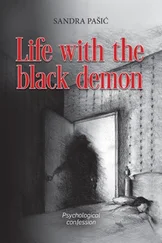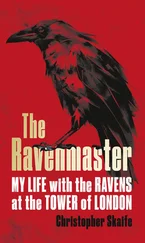Erich Kempka, b Oberhausen in the Rhineland 16 September 1910, d Freiburg-Heutingsheim 24 January 1975; profession: electrician; 1930 joins the NSDAP and SS, driver for the Gau Essen; 1932 driver for the SS escort commando in Munich; 1936 Hitler’s permanent chauffeur and head of motor vehicles department; 1 May 1945 flees from the Führer bunker; 20 June 1945 arrested by the US Army, interned in various camps until 1947.
Traudl Junge was misinformed. In fact Hitler’s niece Angela Maria Raubal, known as Geli, committed suicide on 18 September 1931 after a quarrel with Hitler.
In 1931 Adolf Hitler was on his way not to Nuremberg but to Hamburg for elections. However, he was near Nuremberg when news of his niece’s death reached him.
SS-Obersturmführer Hans Pfeiffer was detailed for duty as Adolf Hitler’s aide-de-camp on 10 October 1939.
Ernst ‘Putzi’ Hanfstaengl and his wife Erna were among Hitler’s principal early companions at the beginning of the 1920s.
Helene Marie ‘Marlene’ von Exner, b Vienna 16 April 1917; trains as a dietician at Vienna University; Sept. 1942–July 1943 dietician cook to Marshal Antonescu in Bucharest; July 1943 dietician cook to Hitler until she leaves the post on 8 May 1944.
Traudl Junge is referring to Adolf Hitler’s meeting with Benito Mussolini on 19 July 1943 in Feltre near Belluno.
Hans Baur, b Ampfing 19 June 1897, d Neuwiddersberg 17 February 1993; profession: businessman; 1916 pilot with the Bavarian Aviation Division I; 1920 joins Bavarian Air Mail Service; 1922 joins Bavarian Air Lloyd; 1926 joins Lufthansa, flies Adolf Hitler to his election campaigns in 1932; 1933 (as Hitler’s pilot) becomes SS Standartenführer on Himmler’s staff; 1944 appointed SS Brigadeführer, finally becomes lieutenant general of police; 1 May 1945 breaks out of the Führer bunker; 2 May 1945 taken prisoner by the Russians, interned in various prisons and labour camps until 1955.
Mussolini was in fact removed from power on 25 July 1943, just a week after his talks with Hitler, and was arrested and stripped of his offices. German paratroopers freed him from imprisonment on the Campo Imperatore (Gran Sasso d’Italia) on 12 September 1943. Thereafter he led a shadowy existence in northern Italy as a dependent of Hitler.
As Traudl Junge herself says, she remembered only a few outstanding points of the eventful year 1943, and then not in chronological order. Stalingrad ‘fell’ before Hitler’s meeting with Mussolini. The southern defences around Stalingrad surrendered on 31 January 1943, the northern defences on 2 February 1943. The High Command of the Wehrmacht officially announced: ‘The battle for Stalingrad is over. True to their oath of allegiance to the last breath, the army, under the exemplary leadership of Field Marshal Paulus, has fallen to the superior power of the enemy and the unfavourable weather conditions. […] They died that Germany might live.’
The SD◦– Sicherheitsdienst◦– was the security service of the Reichsleiter’s SS, after 1936 officially the intelligence and counter-intelligence service of the German Reich, its main business being to provide the Secret State Police (the Gestapo) with information about opponents of National Socialism at home and abroad.
Here Traudl Junge is obviously anticipating an event in the spring of 1945. On 6 April Soviet troops entered Vienna, and by 13 April the city was in the hands of the Red Army. The following text, however, returns to the spring of 1944.
The SS ‘mist department’ had over 270 smoke mortars, each of which could hold about 200 litres of mist-generating acid. If an enemy attack threatened, the Berchtesgadener Land could be covered with artificial mist within thirty minutes.
Eduard Dietl, b Bad Aibling 21 July 1890, d Semmering, Austria 23 June 1944 (in a plane crash); was not, as Traudl Junge says, a field marshal, but a colonel general (from 1 June 1942), and was finally commanding officer of the 20 thMountain Army (the Lapland Army). On his last visit to Hitler on the Obersalzberg on 22 June 1944, a day before his death, it was agreed that he would negotiate with the leading Finnish politicians and military men in Helsinki because Finland looked like breaking away from the confederacy of states allied to Germany, and that Joachim von Ribbentrop, the Foreign Minister, would take part in these negotiations. From 1 October 1909 a professional soldier, fights in the First World War (as captain); 1918 joins the Freikorps Epp; 1920 joins the German Workers’ party; 1 February 1930 major; 1 February 1933 lieutenant colonel; 1 January 1935 colonel and on 15 October 1935 commander of Mountain Regiment 99; 1 April 1938 major general; 1 September 1939 commander of 3 rdMountain Army division in Graz; 1 April 1940 lieutenant general; 19 July 1940 general of infantry, position later renamed general of Mountain Army, leader of Mountain Corps Norway; 15 January 1942 commander of the 20 thMountain Army (Lapland Army); 1 June 1942 colonel general; 1 July 1944 is given a state funeral attended by Hitler at Schloss Klesheim near Salzburg, buried in Munich North Cemetery on 2 July 1944. Holder of the 72 ndaward of swords to the Knight’s Cross of the Iron Cross with oakleaves.
Traudl Junge is confusing Colonel General Dietl’s visit with that of General Hans-Valentin Hube of the Panzer troops on 20 June 1944 (for Hube, see also under note 70). The award to General Hube of the brilliants to the Knight’s Cross of the Iron Cross with oakleaves and swords was the fourth level of award of the Knight’s Cross, and was made 27 times in all. The order of the Iron Cross was revived on 1 September 1939 and comprised the Iron Cross first and second class, the Knight’s Cross of the Iron Cross (7,318 awards) as well as the Grand Cross of the Iron Cross (1 award). Further variations were as follows: instituted on 3 June 1940, the Knight’s Cross of the Iron Cross with oakleaves (882 awards); on 28 September 1941, the Knight’s Cross of the Iron Cross with oakleaves and swords (159 awards) and the Knight’s Cross of the Iron Cross with oakleaves, swords and brilliants (27 awards); and on 29 December 1944, the Knight’s Cross of the Iron Cross with golden oakleaves, swords and brilliants (1 award). The original order goes back to the Iron Cross instituted by King Friedrich Wilhelm III of Prussia on 10 March 1813.
The air accident in which Colonel General Hans-Valentin Hube was killed and Liaison Officer Hewel badly injured near Salzburg was not, as Traudl Junge writes, a few weeks later but a few weeks earlier, on 21 April 1944. Panzer General Hube was summoned to Hitler’s 55 thbirthday celebrations on the Obersalzburgon 20 April 1944 to receive the (13 th) award of brilliants to the Knight’s Cross of the Iron Cross with oakleaves and swords. At the same time Hube was promoted to colonel general. Hans-Valentin Hube, b Naumburg, Silesia 29 October 1890, d near Salzburg 21 April 1944 (in a plane crash); 1909 begins his military career, fights in the First World War, has his left arm amputated in 1914; 1918 captain; 1931 major; 1934 lieutenant colonel; 1 August 1936 colonel, later commander of Döbertiz infantry school and commander of Infantry Regiment 3; 1940 commander of the 16 thInfantry division which became the 16 thArmoured division, major general; 1942 general of Panzer troops; 1943 supreme commander of the 1 stPanzer army; 20 April 1944 promoted to colonel general; 21 April 1944 dies in an air crash, state funeral in the presence of Hitler at the Invaliden cemetery in Berlin.
Читать дальше
![Traudl Junge Hitler's Last Secretary: A Firsthand Account of Life with Hitler [aka Until the Final Hour] обложка книги](/books/416681/traudl-junge-hitler-s-last-secretary-a-firsthand-cover.webp)



![Джонатан Димблби - Barbarossa - How Hitler Lost the War [calibre]](/books/385421/dzhonatan-dimblbi-barbarossa-how-hitler-lost-the-w-thumb.webp)







